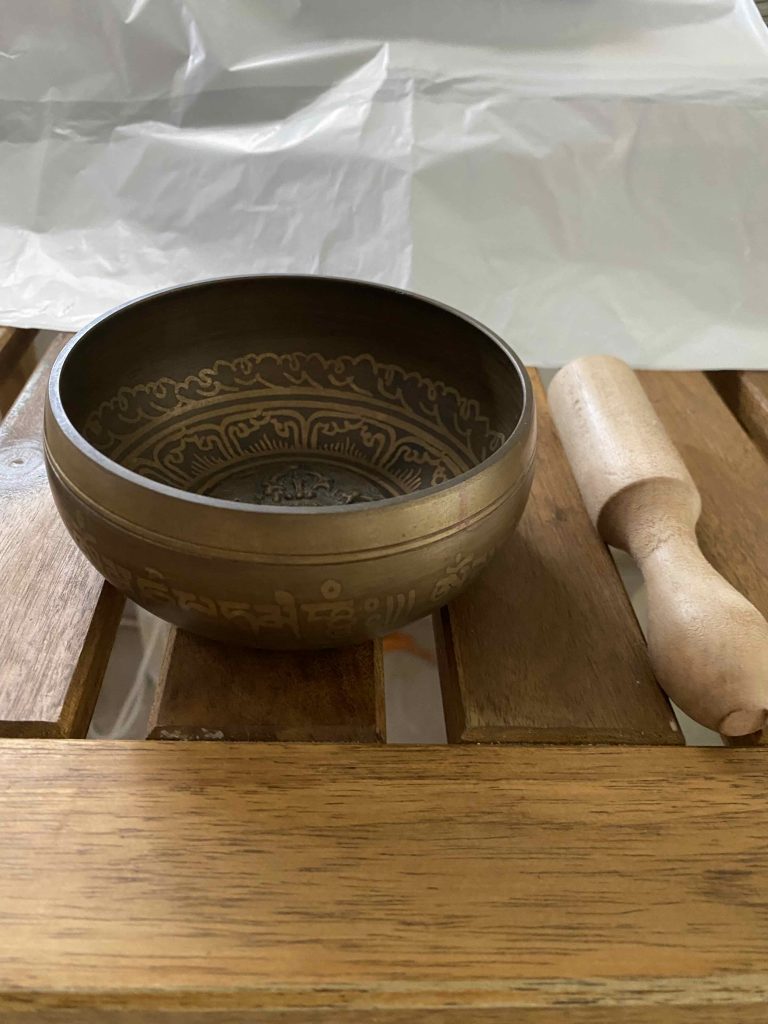This belongs to the broad category of meditation using senses. The sense of hearing is one of our five senses. How do you practice meditation using sounds? Pick a simple sound that is continuous in your environment. If you’re sitting at home while a pot is simmering over the stove, there could be a sound of the liquid bubbling as it boils. You can use this sound to meditate. If you have no other source of continuous sound, you might like to use a table clock, small portable fan, or kitchen timer, whose ticking is audible enough for you to focus on.
If you’re using a clock or timer, set it to 60 or 90 seconds. Listen to the ticking sound. Close your mind to other sources of stimuli, and mental thoughts. Listen to your chosen sound. If your focus strays, gently return to it. Listening to the same sound can become soothing. Many regular sources of input stimuli can induce you to feel comforted and soothed by its rhythm.
When your alarm rings to tell you its the end of your sound meditation, breathe deeply. Slowly receive the stimuli that surrounds you. Be attentive to the sounds in your background. Gently return to the pressing issues that are calling for your attention and time. Prepare to return to your station in life.

We are surrounded by sounds. We cannot expect to live in a vacuum sans sounds. This means we have to learn to live with sounds and their stimulations. We can adapt to learn to use sounds positively.
There are three main types of sounds:
- Real sounds which have a source.
- Perceived sounds. These are secondary sensations resulting from primary sounds.
- Imagined sounds. These are “hearing” music in the mind, remembering speech voiced and the “monkey chatter” of our mental thoughts.
A sound stimulates us, until its place of importance is taken over by a new sound. The human mind has more affinity for the new sound, and we all but forget the old sound.

This bowl is known by many names. It has been called the Himalayan bowl, Tibetan singing bowl, Nepalese bowl. Some users believe it can be used for relieving stress, back pain, depression, insomnia, migraine, negative energy.
For fast and effective relief, you may need to use this around 5 times daily. Please space out your uses throughout your day. You only need to spend 1 minute each time. Breathe slowly while you are practising this sound meditation. Use the wooden stick to touch and circle around the outer circumference of the bowl. This produces a continuous, ringing sound. The bowl vibrates too. The sound continues as long as you continue to touch the stick to the circumference of the bowl. There are many youtube videos on demonstrations. All show the basic principle of making sounds, which reverberate at different frequencies, which supposedly help with various ailments.
You don’t need to travel overseas to purchase such a bowl. It is available in the mentioned local communities’ markets. The Indian, Tibetan and Nepalese communities’ local area trade fairs and markets will sell this type of bowl.
I have been using this bowl, together with classical music, to relieve stress.
The use of sound for rest, reflection and meditation is well known. The converse can also be true; using absence of sound, that is, silence, to meditate or rest.
With increasing awareness of mental health needs, there are facilities with accommodation for care, to snatch a brief respite from environmental stimulation. Some public buildings have designated rooms for Quiet Room / Calm Room. This is a room with dim lighting, whose walls are painted in neutral shades of colors, and the walls are reinforced with soundproof padding to reduce noise from outside. There will be comfortable seats, to permit users to relax, take a break from sensory overload, and calm down.
Besides environmental stimulation, there are other sources of stimulation from emotions, anxiety, fear and etc. The outdoors certainly present a wide variety of stimuli and some types of people face challenges in processing these data. The categories include young children, and people with autism/ ADHD/ dementia.
Sound can be used for therapy. Common sources of sound therapy come from chanting, drums, gongs and singing. The newest technology is binaural beats. Neuroscientists recommend this. It is effective to relax and maybe induce sleep. It should not be used while driving because of the potential consequences of falling asleep.
This uses headphones to deliver different sound frequencies to each ear. The brain interprets these as having different rhythmic frequencies, which stimulate certain neural responses. The reactions are
- Help you to relax
- Help to reduce stress
- Help you fall asleep
- Improve concentration
- Improve memory
Binaural beats are available on youtube.com and Spotify.
Related posts:
- https://artmater.com/category/psychology/meditation/
- Fancy looking at free art to reflect and meditate on the beauty of art? Click here.